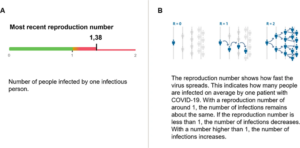
BMC Environmental Science – Anaerobic digestion of spoiled milk from dairy industry for biogas production – optimization of operating parameters and kinetic modeling of the pilot scale study

It is known that organic waste such as dairy by-products can be used to produce biogas. This is not only a useful way to obtain valuable renewable energy energy, but also an efficient disposal method for large volumes of waste material. Biogas production is achieved by anaerobic digestion, a process involving anaerobic bacteria to break down the organic matter.
This research explores the kinetic parameters required to effectively use anaerobic reactors for this process, with the objective of preventing the unwanted mixing of spoiled milk and effluent, which is potentially recyclable by other means. The study determined optimal pH range for methane-producing bacteria (5-8), chemical oxygen demand, total solids, inoculum and retention time.
Overall the optimized parameters and the anaerobic sequencing batch reactor used produced 70.4 liters of biogas per liter of spoiled milk. The study concluded that optimization of the kinetic parameters and the use of an anaerobic sequencing batch reactor are important elements to consider in biogas production.
BMC Ecology and Evolution – Shed teeth from Portezuelo formation at Sierra del Portezuelo reveal a higher diversity of predator theropods during Turonian-Coniacian times in northern Patagonia

The Portezuelo Formation in northern Patagonia is a region rich in fossil remains. This study reports the identification of 32 shed teeth discovered in the Portezuelo Formation and attributed to theropods, large bipedal, carnivorous dinosaurs. The teeth, from the middle Turonian to late Coniacian, show different levels of preservation. They were identified as belonging to Megaraptoridae, Abelisauridae, Abelisauroidea and Alvarezsauridae.
The presence of a second, previously undocumented morphotype of megaraptorid and alvarezsaurid as well as the unusual denticle density of Morphotype 6, which suggests the existence of medium-sized abelisauroids, point towards a greater theropod diversity than previously reported and highlights the importance of future expeditions to Sierra del Portezuelo to fully explore this diverse ecosystem.
This article is part of the ‘Paleoecology of extinct species’ Collection. You can read more about the Collection here: https://www.biomedcentral.com/collections/poes
BMC Pregnancy and Childbirth – Impacts of heat exposure in utero on long-term health and social outcomes: a systematic review

Climate change is a very prominent topic, often discussed in relation to disappearing natural habitats and the risk of extinction of animal species, but what is its effect on the human body? It is increasingly being suggested that heat exposure can be linked to a multitude of health effects in vulnerable groups.
In this study, the authors carried out a systematic review of the long-term effects heat exposure can have on the foetus. They found that heat exposure is associated with a detrimental effect on neurodevelopment and consequentially on associated socioeconomic and behavioural aspects. They also found this to be more prevalent in marginalised groups. While studies did not use widely accepted exposure indices when accounting for heat exposure, making data assessment challenging, this research highlights the need for further investigation into the effect of heat on the human body development.
BMC Public Health – “R” you getting this? Factors contributing to the public’s understanding, evaluation, and use of basic reproduction numbers for infectious diseases

Statistical measures related to infectious diseases were brought to the public’s attention during the COVID-19 pandemic. The reproduction number, or R number, was communicated via the media regularly as an indication of the spread of the disease (the average number of people that are infected by a single person).
The authors of this study investigated the public’s understanding of the R number and what factors, such as visual aids, might affect it. They found that the majority of the population (55.7%) understands its meaning. The use of a visual aid did not improve this, while an evaluative label did. The propensity to adhere to preventive measures was found to be higher after seeing the R number, irrespective of the use of evaluative label or visual aid.
This research provides valuable guidance to public health communicators and policy makers.
BMC Biomedical Engineering – On the role of generative artificial intelligence in the development of brain-computer interfaces

Brain signals can be analyzed and translated into commands to external devices using systems called brain-computer interfaces. These technologies have been employed for tasks such as wheelchair control, prosthetics control and speller systems as well as rehabilitation therapies, and as such are increasingly promising solutions as assistive technologies for people with disabilities.
This review explores how generative AI has been adopted to overcome limitations in the use of non-invasive brain-computer interfaces. Specifically, it enhanced the performance of BCI with respect to four different challenges: limited data availability, low signal resolution, inter-subject variability and development of end-to-end BCI applications. The review also discusses current limitations preventing a more widespread incorporation of generative AI in BCI.
This highlights the impact that the use of generative AI in BCI can have in the development of assistive technologies.
Comments